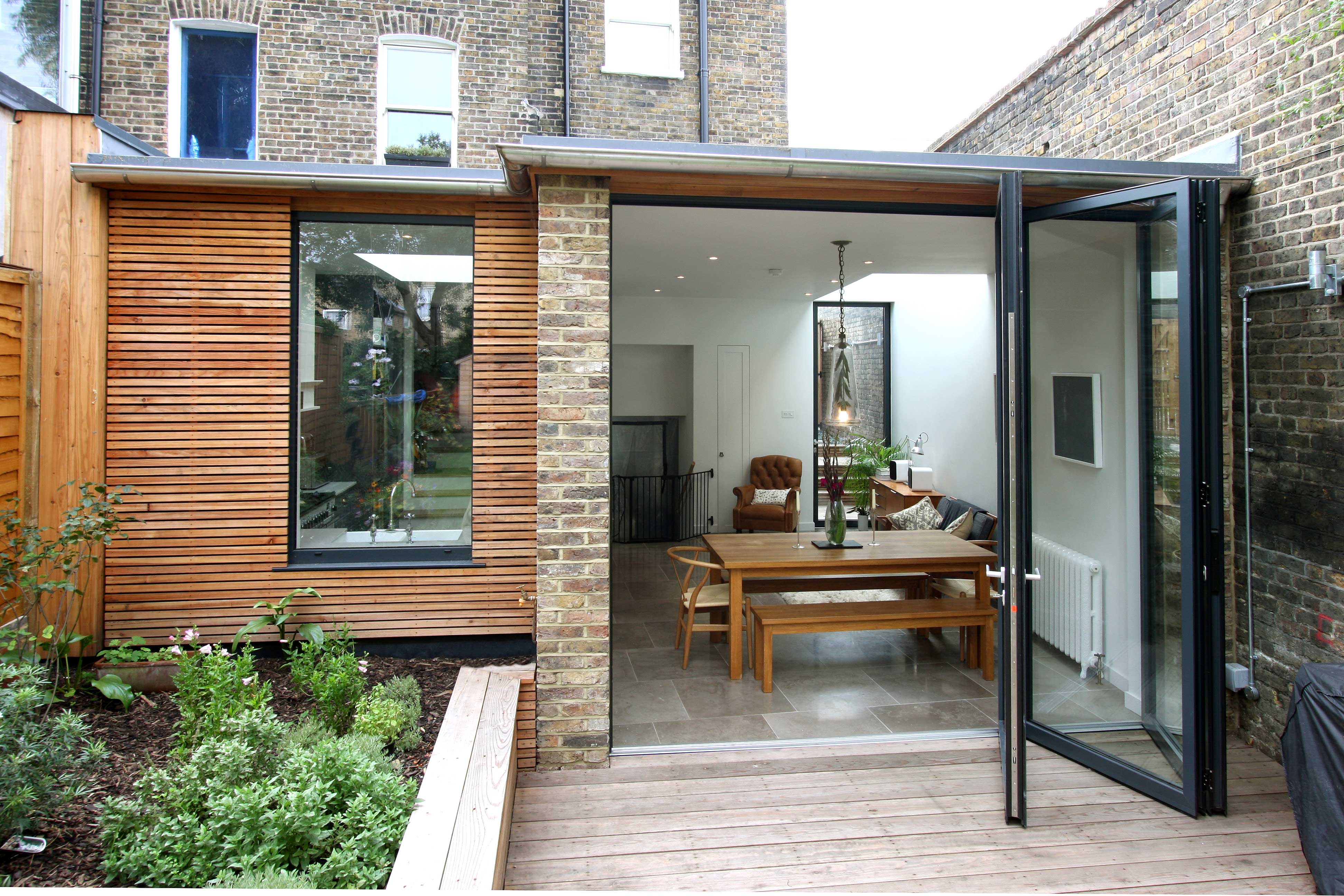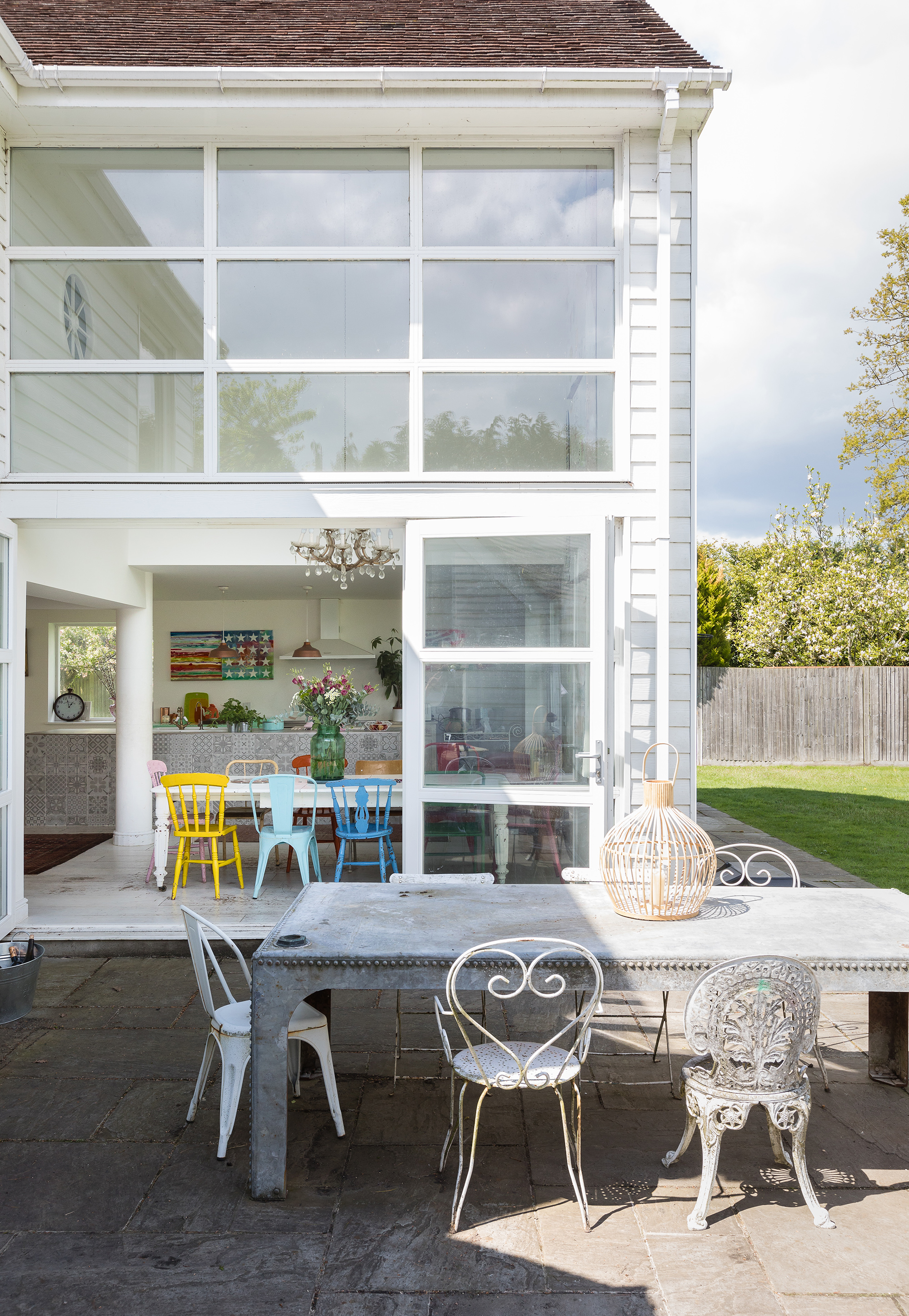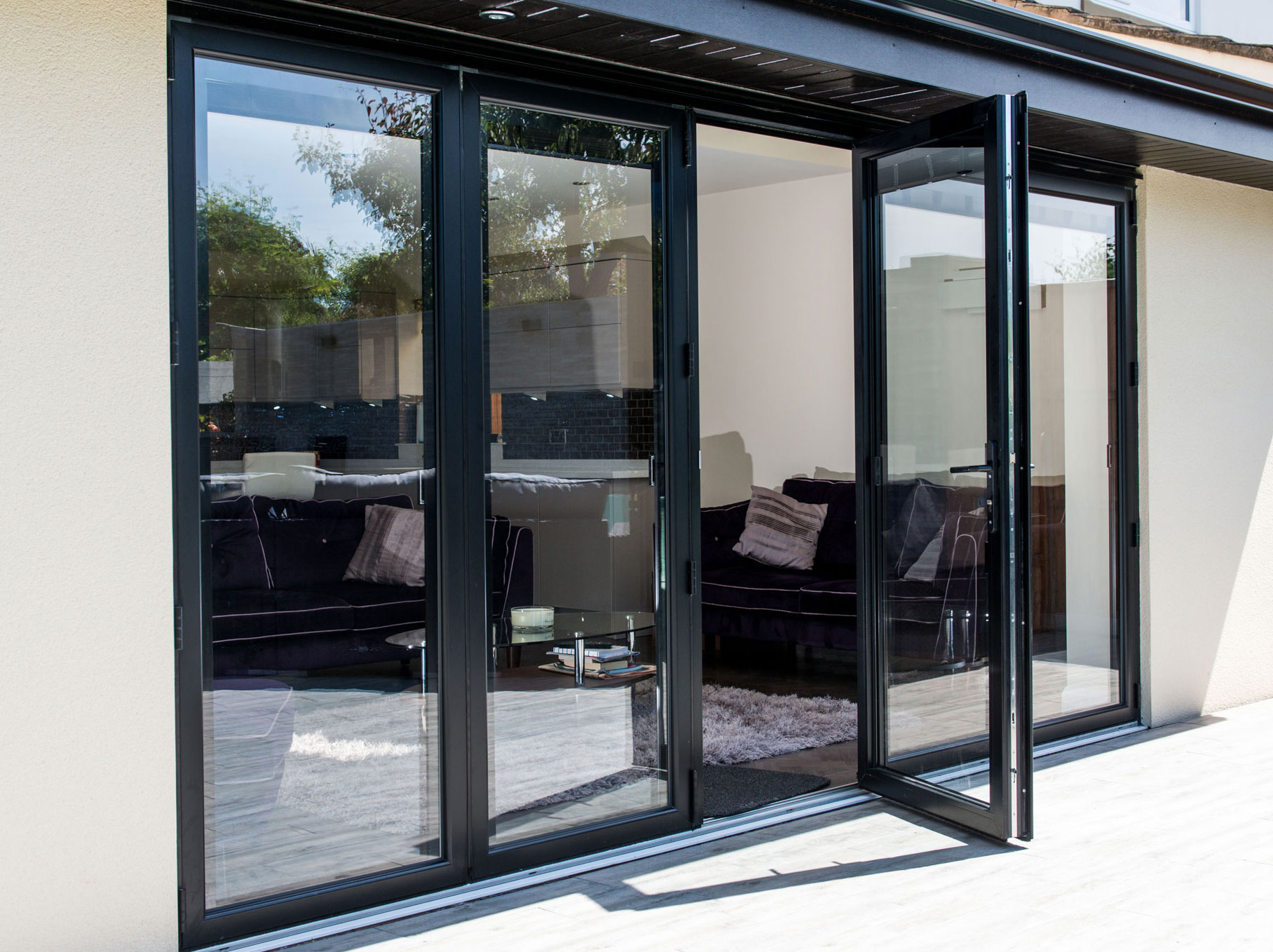

The cost of bi-folding doors can be a worthwhile expense if you want to be able to open the inside of your home to the outside. Of all the options available as patio doors, these allow the widest opening between the house and the exterior, and even when they’re closed, they permit excellent views of the backyard from the room in which they’re fitted.
Quality bi-folding doors are also easy to open and close, and look stylish, too, with a choice of frame materials and colors allowing you to complement the rest of the windows in your home.
But if you’re thinking of fitting them, or choosing between bi-folding or sliding doors, you’ll need to know the costs, and that’s where we come in. We’ve got the details you need on average costs, different materials, and installation.
What is the cost of bifolding doors?
With panels that concertina together to open the aperture in which they’re fitted to the outdoors, bi-folding doors are a great choice as patio doors. But what should you budget to have this type of door fitted?
‘Installing bifold patio doors typically costs between $3,000 and $10,000 total, or $500 to $900 per linear square foot,’ says Bailey Carson, home care expert at Angi.
‘The exact price will depend on the material, size and style of the doors, as well as the cost of labor in your area,’ she continues. ‘Bifold patio doors are more expensive than other types of patio doors, which usually cost closer to $2,500.’
How much does it cost to install bi-fold patio doors?
The cost of professionally installing bi-folding doors is one you should factor in. ‘Labor typically makes up about $400 to $1,400 of the total project cost, while the rest will depend primarily on your material choices,’ says Bailey Carson.
How does the material affect the cost of bifold patio doors?
Which of the different frames you select will affect the cost of bi-folding patio doors, especially if part of a home addition. ‘Bifold doors are usually made of either one or two materials,’ explains Bailey Carson. ‘If you’re looking to save money on your project, think about opting for less expensive materials for the door, like molded composite instead of wood, or vinyl instead of steel.’
What can you expect to pay? ‘The costs per square linear foot start at between $600 and $800 for frames made of materials like vinyl and aluminum,’ says Adam Graham, industry analyst at Fixr. ‘If you want fiberglass or steel, you are looking at costs between $600 and $1,200 a linear foot installed.’
Consider appearance, durability, and maintenance requirements when assessing the different frame options. ‘Vinyl is a durable and inexpensive material commonly used for smaller bifold doors, and is a great option if you’re looking to spruce up a doorway without breaking the bank,’ says Bailey Carson. It can look like wood, and is low maintenance.
Aluminum creates strong and sleek framing, and can be a good choice in regions with strong winds. It is also used as exterior cladding for wood patio doors to reduce maintenance.
More costly, fiberglass is a strong material that can be the best option for regions that experience large shifts in temperature during the year. It is easily maintained.
Steel is also a strong option and creates slim frames that maximize views. It’s highly durable and resists weather, fire, and decay.
How does glazing choice influence cost?
The glazing you choose is a further factor in the final cost of bi-folding doors. The per linear foot costs above assume basic double-pane glazing. ‘If you want to add features like argon gas or low-E coating, expect your costs per square linear foot to jump up another $100 to $200 making your total cost range $700 to $1,400 depending on your material,’ says Adam Graham.
Join our newsletter
Get small space home decor ideas, celeb inspiration, DIY tips and more, straight to your inbox!

Sarah is a freelance journalist and editor writing for websites, national newspapers, and magazines. She’s spent most of her journalistic career specialising in homes – long enough to see fridges become smart, decorating fashions embrace both minimalism and maximalism, and interiors that blur the indoor/outdoor link become a must-have. She loves testing the latest home appliances, revealing the trends in furnishings and fittings for every room, and investigating the benefits, costs and practicalities of home improvement. It's no big surprise that she likes to put what she writes about into practice, and is a serial house revamper. For Realhomes.com, Sarah reviews coffee machines and vacuum cleaners, taking them through their paces at home to give us an honest, real life review and comparison of every model.
-
 Bi-fold or sliding doors – how to choose the right option for your home
Bi-fold or sliding doors – how to choose the right option for your homeHow to choose between bi-fold or sliding doors. From costs to installation, how much light they let in and more pros vs. cons.
By Lucy Searle Last updated
-
 5 reasons to choose aluminium bi-fold doors
5 reasons to choose aluminium bi-fold doorsBi-fold doors are as popular as ever with homeowners looking to introduce more light and bring a sense of the outdoors into their home. But how do you know if aluminium is the right material for you?
By Sponsored Published